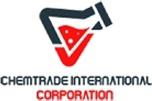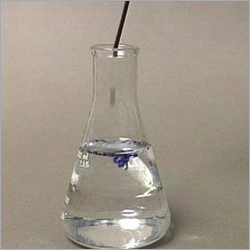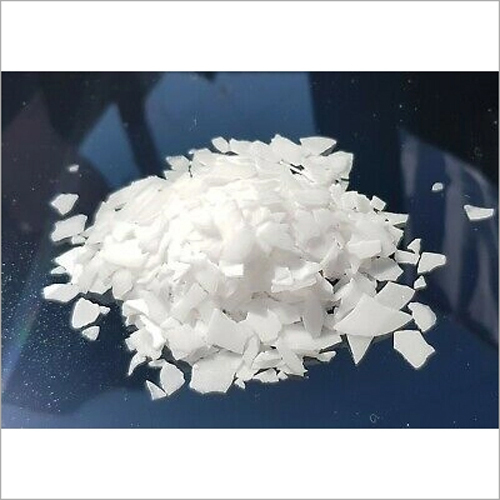
Poly Aluminium Chloride
400.00 - 450.00 USD ($)/Ton
Product Details:
- Application Industrial
- Usage Industrial
- Solubility soluble in water
- Shape Granules
- Physical Form Powder
- Storage Room Temperature
- Poisonous YES
- Click to View more
X
Poly Aluminium Chloride Price and Quantity
- 400.00 - 450.00 USD ($)/Ton
- 20 Ton
Poly Aluminium Chloride Specifications
- Room Temperature
- Yellow powder
- YES
- Powder
- Granules
- soluble in water
- Industrial
- Industrial
Product Description
Poly Aluminium Chloride is a yellow colored powdered compound that is prepared by using elements such as chlorine, aluminum, hydrogen, and oxygen. It is widely used in various industrial sectors as a water cleaning agent to efficiently remove various types of impurities from water. It functions as a coagulant to extract and clump together contaminants, colloidal and suspended matter that can be easily removed using filters. It is advised to store Poly Aluminium Chloride in cool and dry place as it is incompatible with materials such as strong acids and bases. Buy from us this industrial compound at a reasonable price.
Poly Aluminium Chloride Properties:
1. Chemical Formula: The chemical formula for Poly Aluminium Chloride can vary based on its composition and production methods. Generally, it is represented as (Aln(OH)mCl3n-m) where n represents the polymerization degree, and m represents the number of chloride ions.
2. Appearance: PAC is typically available as a light yellow to dark brown, viscous liquid or as a fine powder. The color can vary depending on the source and manufacturing process.
3. Solubility: PAC is soluble in water and forms a colloidal solution when dissolved. The solubility and stability of PAC can vary depending on factors such as pH and temperature.
4. Coagulation and Flocculation: PAC is commonly used in water treatment as a coagulant and flocculant. It helps to destabilize and aggregate suspended particles, colloids, and organic matter in water, allowing them to be more easily removed during sedimentation and filtration processes.
5. pH Dependency: The coagulation efficiency of PAC is influenced by the pH of the water. It is effective over a wide pH range, but its optimal pH range for coagulation varies depending on the specific application and water quality.
6. Aluminum Content: PAC contains aluminum ions, which play a key role in coagulation. The aluminum ions neutralize the negative charges on suspended particles, allowing them to clump together and settle out of the water.
7. Chloride Content: PAC contains chloride ions, which can contribute to the overall ionic strength of the treated water. The chloride content can affect the taste and odor of the treated water, especially in cases of higher doses.
Applications of Poly Aluminium Chloride:
1. Water Treatment: PAC is extensively used in water treatment plants for the purification of drinking water and wastewater. It effectively removes suspended particles, colloids, organic matter, and certain dissolved substances from water through coagulation and flocculation processes.
2. Municipal Water Treatment: PAC is applied in the treatment of municipal water supplies to clarify and disinfect water before distribution to consumers. It helps in reducing turbidity, removing bacteria and algae, and improving the overall quality of the water.
3. Industrial Water Treatment: Industries such as pulp and paper, textiles, chemicals, and food processing use PAC to treat process water, cooling water, and wastewater. It aids in the removal of contaminants and pollutants, ensuring compliance with environmental regulations.
4. Effluent Treatment: PAC is used to treat industrial effluents and wastewater before discharge into rivers, lakes, or sewers. It assists in minimizing the environmental impact by reducing pollutants and improving the quality of the discharged water.
5. Potable Water Production: PAC is employed in the production of potable (drinking) water from various sources such as rivers, lakes, and groundwater. It helps in meeting water quality standards and ensuring the safety of the drinking water supply.
6. Swimming Pool Water Treatment: PAC is used to maintain the clarity and cleanliness of swimming pool water by aiding in the removal of organic contaminants, bacteria, and algae.
7. Oil and Gas Industry: PAC is utilized in the oil and gas industry for the treatment of produced water, which is the water extracted along with oil and gas from wells. It assists in separating and removing oil, suspended solids, and other impurities from the produced water.
8. Textile Industry: In the textile industry, PAC is employed for the treatment of dyeing and finishing wastewater to reduce color and chemical content, ensuring that effluents meet regulatory standards before discharge.
9. Mining Industry: PAC is used in mining operations for the treatment of mine drainage and wastewater. It aids in the removal of heavy metals, suspended solids, and other contaminants from mining effluents.
10. Stormwater Management: PAC can be applied in stormwater management systems to help settle suspended particles and reduce pollutants in runoff water before it enters natural water bodies.
11. Paper and Pulp Industry: PAC is used in the paper and pulp industry for the treatment of wastewater generated during the papermaking process. It assists in removing lignin, cellulose, and other organic materials from the wastewater.
12. Agriculture and Land Rehabilitation: PAC can be used in agriculture for soil stabilization and erosion control. It helps improve soil structure and reduces soil erosion in areas affected by construction, mining, or other disturbances.
FAQ:
Q. What is Poly Aluminium Chloride (PAC)?
Ans: PAC is a chemical compound used in water treatment processes as a coagulant and flocculant. It helps to remove suspended particles, colloids, and organic matter from water, making it clearer and safer for various applications.
Q. How does PAC work in water treatment?
Ans: PAC works by neutralizing the negative charges on suspended particles and colloids in water. This allows these particles to come together and form larger aggregates, which can then be easily removed through sedimentation or filtration processes.
Q. What are the benefits of using PAC in water treatment?
Ans: PAC offers effective coagulation and flocculation properties, making it useful for clarifying water, reducing turbidity, removing contaminants, and improving overall water quality. It can be used in various applications, including drinking water treatment, industrial processes, and wastewater treatment.
Q. Is PAC safe for drinking water treatment?
Ans: PAC is generally considered safe for drinking water treatment when used within recommended dosage limits. However, it's essential to follow guidelines and regulations to ensure proper dosing and minimize any potential risks.
Q. What is the difference between PAC and traditional coagulants like alum?
Ans: PAC is often preferred over traditional coagulants like alum due to its higher charge density and ability to work effectively over a broader pH range. PAC also produces less sludge compared to alum, leading to reduced waste disposal costs.
Q. Can PAC be used in wastewater treatment?
Ans: Yes, PAC is commonly used in wastewater treatment processes to remove contaminants and pollutants. It aids in settling suspended solids and organic matter, thus improving the quality of treated effluents before discharge.
Q. How do I determine the appropriate dosage of PAC for my water treatment process?
Ans: The optimal dosage of PAC depends on factors such as water quality, pH, temperature, and the specific contaminants present. Conducting jar tests or consulting water treatment experts can help determine the correct dosage for your application.
Q. Does PAC have any environmental impacts?
Ans: The use of PAC can lead to the formation of residual aluminum sludge, which needs proper management and disposal. It's important to follow environmental regulations and guidelines when handling and disposing of PAC and its byproducts.
Q. Can PAC be used for other applications besides water treatment?
Ans: While PAC is primarily used for water treatment, it can have applications in soil stabilization, erosion control, and some industrial processes where coagulation and flocculation are needed.
Q. Is PAC compatible with other chemicals used in water treatment?
Ans: PAC can be used alongside other water treatment chemicals, but compatibility and interactions should be considered. It's advisable to consult with water treatment professionals when combining different chemicals.
Q. Can PAC be used for emergency water treatment or disaster relief situations?
Ans: Yes, PAC can be used in emergency situations to quickly clarify and disinfect water. However, proper dosing and testing are crucial to ensure the treated water meets safety standards.
Q. Are there any regulations governing the use of PAC in water treatment?
Ans: Regulations regarding PAC usage can vary by region and application. It's important to be aware of local water quality standards and regulations when using PAC for water treatment.
Enter Buying Requirement Details
Other Products in 'Industrial Chemical' category
 |
Chemtrade International Corporation
All Rights Reserved.(Terms of Use) Developed and Managed by Infocom Network Private Limited. |

 English
English Spanish
Spanish French
French German
German Italian
Italian Chinese (Simplified)
Chinese (Simplified) Japanese
Japanese Korean
Korean Arabic
Arabic Portuguese
Portuguese Call Me Free
Call Me Free Send SMS
Send SMS


